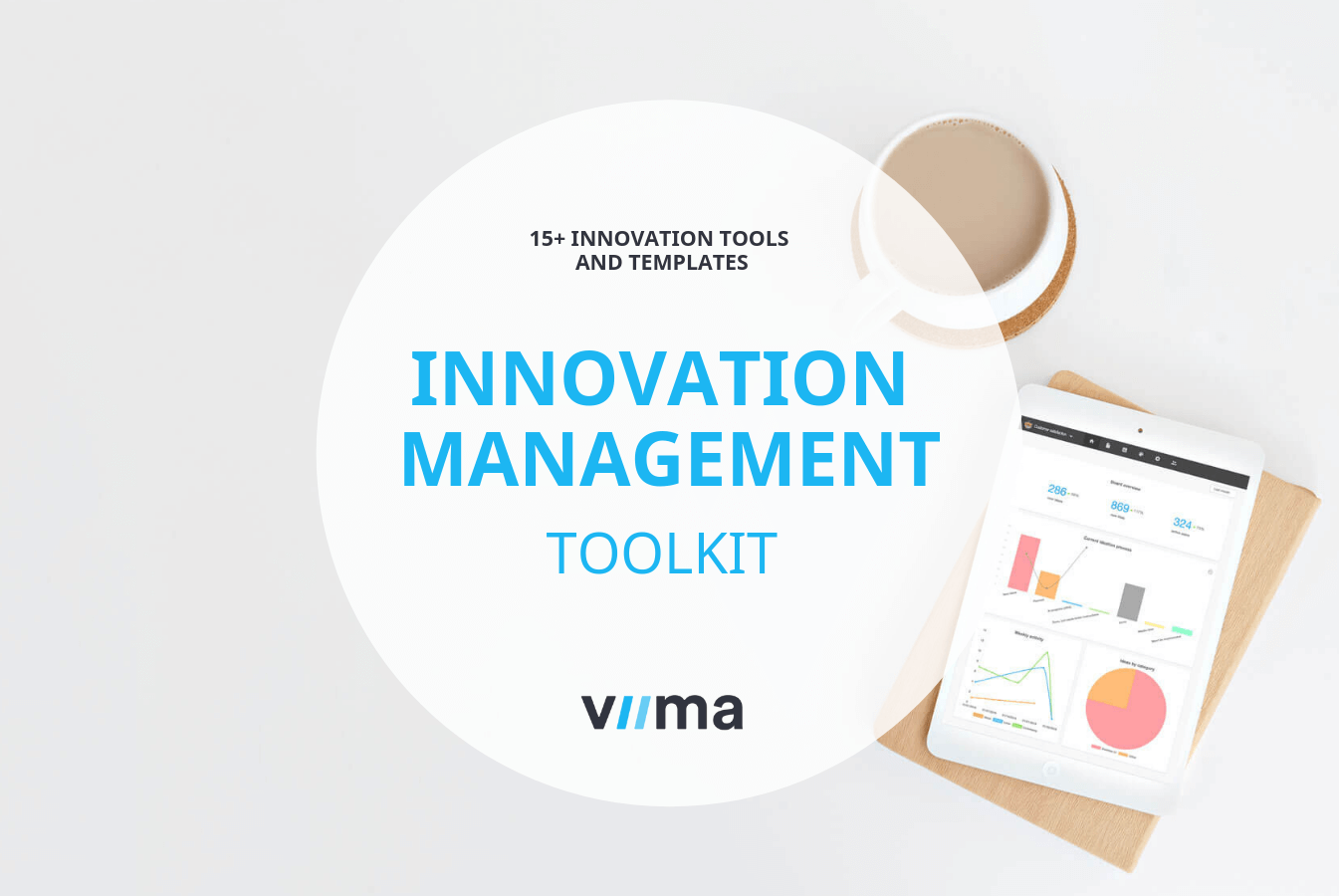Breakthrough Innovation – What Are They, and How Do You Create One?
We’ve recently been breaking down the different types of innovations and explaining their differences in a series of posts on our blog.
This time, we’re looking at breakthrough innovation.
It’s a commonly used term, and just like most other innovation terminology, there doesn’t seem to be a clear consensus on what the word means. Still, more and more startups and corporations alike are chasing after it.
So, in this post, we’ll look into what breakthrough innovation actually is, why it is important, and how to actually create one.

Table of contents
What is breakthrough innovation?
As mentioned, the definitions we’ve seen for breakthrough innovation are quite diverse. For example, some use it as a synonym for disruptive innovation, where others refer to it as a specific significant technological advance that makes a large impact on the efficiency or cost of a given product, service, or process.
However, what virtually all of these definitions have in common is that breakthrough innovation is considered to be something that fundamentally changes the dynamics of a given industry or market.
Breakthrough innovation fundamentally changes the dynamics of a given industry or market
As such, we see as more of an umbrella term for innovations that achieve this kind of a dramatic impact, not as a specific type of innovation.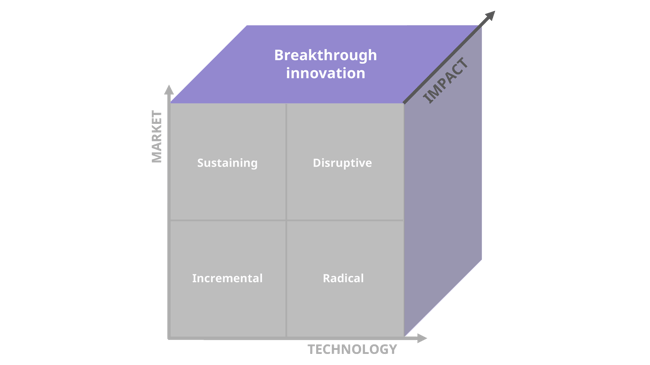 Based on our experience, most of the time breakthrough innovation isn’t actually just a single innovation.
Based on our experience, most of the time breakthrough innovation isn’t actually just a single innovation.
Sure, it’s usually based on a bigger radical or disruptive innovation but must almost always be combined with a number of smaller, incremental and sustaining innovations to live up to its full potential to reshape entire markets and industries.
But more on that later, let's first try to get a better idea of why they are now more important than ever.
Why do breakthrough innovations matter?
In our current age of innovation, there are more emergent technology-based “innovation platforms” than ever before.

Source: ARK Invest, used with permission.
Combined with easy access to information and capital, as well as our increased understanding of new business models and technology-enabled organizations, the ground is ripe for breakthrough innovation to reshape most industries.
Thus, most industries are likely to be impacted by breakthrough innovation in the next couple of decades, and when it comes to innovation, offence is the best defence.
When it comes to innovation, offence is the best defence
However, the interesting part here is that while there have certainly been big winners that pioneered many of the technologies mentioned in the chart above, a huge part of the economic value actually comes from the compounding effect of these big, disruptive innovation platforms being applied to reshape specific industries and markets.
In other words, breakthrough innovation.

So, as explained, the key to understanding breakthrough innovation is that it’s not just one innovation. It’s actually the combination of many innovations to tackle a specific challenge or opportunity.
The reason for this being the case is that it often isn’t possible to solve a truly meaningful problem without combining a number of novel ideas or approaches.
And even when it is, you should still aim to come up with additional innovations that help build your competitive advantage.
For example, having a technological advantage based on a specific innovation is great, but if you combine that with a novel business model and a number of process innovations, you can achieve a much bigger and more sustainable competitive advantage.
If you’re familiar with value innovation from the Blue Ocean Strategy, or the Ten Types of Innovation, this is the phenomenon that both of these great frameworks are actually built upon, even if they approach it from slightly different angles.
Examples of breakthrough innovation
To shed more light into what breakthrough innovation looks like in practice, let’s dive in and look at a couple of examples in more detail:
Airbnb
Airbnb is a classic example of disruptive innovation. The service started off in the very low-end of the travel and hospitality market by just renting out air mattresses for the night, and eventually climbing up-market to eventually surpass all traditional hotel chains.
Their peer-to-peer service couldn’t compete with the big hotel chains in terms of amenities or many of the other characteristics hotel guests are accustomed to, but they are able to offer a more personal experience better able to showcase the local culture instead, and at a more affordable price.
However, that disruptive core business model innovation is only a part of the story.
In addition to redefining what an authentic travel experience can be like, they also gradually made the whole customer experience incredibly smooth end-to-end, far surpassing the traditional competition.
Also, as the whole concept of staying with a complete stranger is fundamentally slightly intimidating for many, they had to build in many novel mechanisms for ensuring trust between the parties.
What’s more, Airbnb requires a critical mass of both guests and hosts to function properly. This is the part where most companies that are looking to build a platform business actually fail. However, in addition to having a great service experience at just the right time for their market, Airbnb was able to overcome the challenge by figuring out and using dozens and dozens of clever marketing innovations to ultimately gain traction, such as their Craigslist integration.
While certainly not disruptive in themselves, the aforementioned innovations all played a significant part in the breakthrough success that Airbnb has been able to achieve.
Reusable rockets
One of the most celebrated advances of the last decade was the rise of a new wave of commercial space companies, such as SpaceX, Blue Origin and Virgin Galactic.
The biggest, and certainly visually most stunning innovations in this sector has been the ability to land and reuse rockets that have been to orbit.
This technology will continue to dramatically decrease the costs of space launches, which is one of the big reasons for a number of new space related technologies and businesses, such as Starlink, becoming feasible.
While reusable rockets are quite widely considered to be a breakthrough innovation, it’s actually not a single innovation. To make them a reality, these companies actually had to come up with quite a few new technologies and innovations.
Even the list of the most notable technologies SpaceX developed for this purpose is quite lengthy, and most of the mentioned technologies are actually “systems”, which means that they can be comprised of even more novel technology.
Tesla
As electric vehicles have gradually started to have a more noticeable impact on the car market, mostly thanks to Tesla, the somewhat academic debate about what kind of innovation the company actually does has picked up in the last couple of years.
Tesla is often cited as being a disruptive innovation for the incumbent automakers. However, Clayton Christensen and his followers have argued that Tesla isn’t actually disruptive but sustaining innovation. Still others have claimed the company to be a prime example of radical innovation. This article by Jay Gerhart does a great job of explaining these different points of view.

I would personally argue that academic details aside, most of these arguments are actually valid, they all simply look at the company from their own points of view.
Looking purely at the core technologies of Tesla’s vehicles, both electric motors and lithium-ion batteries have been around for quite some time and an argument can be made that even though Tesla has clearly refined these technologies, the innovations have been incremental in nature.
However, you could also argue that the way they’ve put together these innovations and constantly and rapidly kept improving them so that they’ve been able to challenge and surpass internal combustion engine cars in many ways is certainly radical innovation, not to mention some of the advances they’ve made in self-driving technology.
Tesla’s full self-driving technology does also have quite a lot of potential to become a disruptive innovation for many branches of the transportation industry.

If, on the other hand, you look at Tesla vehicles as just a part of the overall market for new cars, Teslas are indeed sustaining innovation since they are competing in the high-end segment using basically the same value drivers as the existing competitors, such as luxury, safety, and performance.
However, their vertically integrated business model, combined with the reduced need for maintenance of electric vehicles is certainly disruptive for car dealers and service stations since it threatens to make their existing business models completely redundant over time.
Putting it all together, Tesla has innovated on so many fronts, and in so many different ways that it just doesn’t fit in neatly with most of the innovation theory. The way we see it, this is a textbook example of how breakthrough innovation actually comes about.
As proof of their innovations being a breakthrough for the industry, Tesla’s electric vehicles have actually surpassed the unit sales of their rivals in the segments they're competing in, which has forced the rest of the automotive industry to follow. Now virtually every large automaker is working on their own electric vehicles, and some, such as Volkswagen, are already betting the future of their companies on it.
How to create breakthrough innovations?
Now that you hopefully have a better idea of what breakthrough innovation is, the obvious remaining question is how to make it happen.
Based on our experience of studying the phenomenon closely and on working on the topic, I’d break the process down to three basic steps.
Of course, none of these is necessarily straightforward or easy to implement. Still, they’ll hopefully provide you with a basic understanding of what it takes.
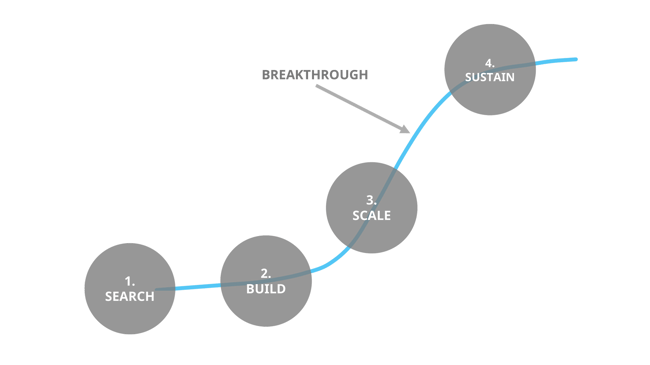
1. Identify the right problem or opportunity
Every breakthrough innovation starts either from solving an existing problem in the market, or by tackling a business opportunity in a fundamentally different way.
Breakthroughs are often enabled by significant advances in technology, such as the proliferation of lithium-ion batteries in laptops made the first Teslas feasible but can also be simply based on unmet needs of the market, such as Airbnb.
Either way, the problem or opportunity has to be big enough so that an innovation could lead to a proper breakthrough, and your approach to address it has be contrarian enough to really transform the way things have been previously done.
As with innovation in general, it’s notoriously difficult to really evaluate innovative ideas in the early stages. However, if you’re really shooting for breakthrough innovation, a good rule of thumb is that people need to think of your plan as crazy, or at least very overambitious.
This is certainly true for all of the examples mentioned above. For example, almost all prominent investors thought Airbnb was a terrible idea, and Elon Musk has stated that “Starting a car company is idiotic and an electric car company is idiocy squared”.
"Starting a car company is idiotic and an electric car company is idiocy squared."
- Elon Musk
If you don’t already have a technology advantage, it’s probably better to try to find unmet needs from the market. Even though it doesn't sound all that glamorous, and might sometimes not lead to as big of a competitive advantage, you are more likely to succeed by focusing on the market, as opposed to researching and developing new technology.
A great way to come up with such innovations is to use a systematic approach like the “Jobs to Be Done” framework (JTBD). JTBD help you look at existing markets differently and focus on what really matters.
2. Address the opportunity with a key innovation
Once you’ve identified an appropriate problem or opportunity, the next step is simply to address that with a key innovation.
This innovation will then be the backbone and the platform on which you can then build your business on.
For example, for Tesla that is an electric drivetrain, and for Airbnb it’s the online platform that enables peer-to-peer accommodation and travel experiences.
While I wouldn’t necessarily call Viima a breakthrough innovation just yet, we’re certainly aiming to become one. Without going into too much detail, our innovation management software is simply better suited for the needs of modern innovators, or those who aspire to become one, than the competition and is also significantly more affordable thanks to our low-cost business model.
That approach of innovation actually enabling more value at a lower cost, generally referred to as value innovation, is a great framework to use for this part of the process.
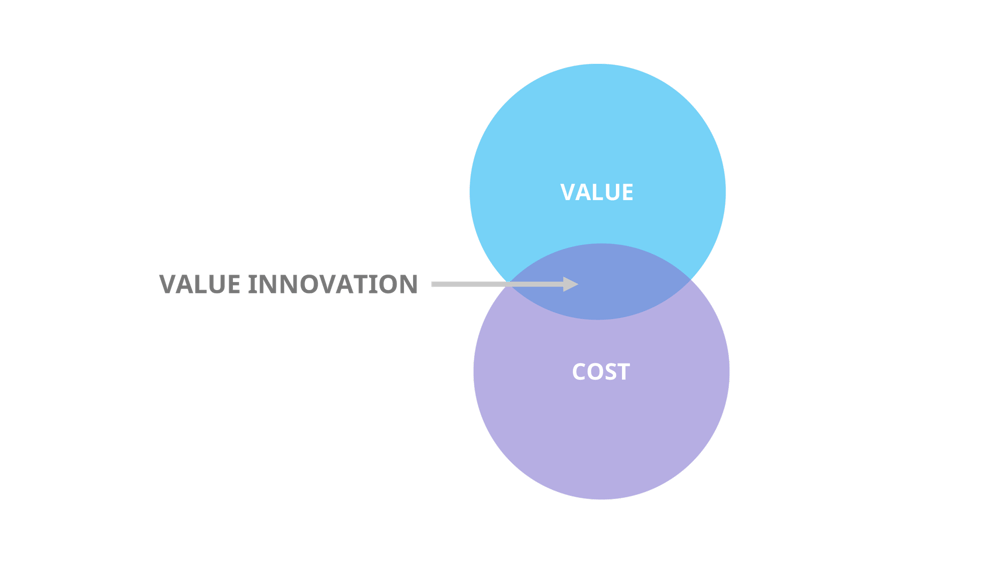
3. Scale the innovation to breakthrough impact
Innovations, no matter how great, never become overnight successes. It always takes years of relentless focus on building and scaling a business around the innovation before it leads to breakthrough impact.
What's more, as scaling such a breakthrough usually involves a lot of "firsts", nearly all breakthrough innovations require supporting innovations to get to scale.
The lightbulb needed an electric grid to become mainstream and illuminate entire cities. Personal computers really took off only after operating systems with graphical user interfaces made them viable for the masses. The list goes on, but you probably get the point.
Nearly all innovations require additional, supporting innovations to lead to impact that can truly be called a breakthrough
Some companies like Tesla choose to take care of those supporting innovations themselves but depending on the situation that isn’t always necessary.
You could also choose to do whatever you can to enable others to build on top of your innovation. This can lead to a stronger network that not only helps you achieve breakthrough impact faster, but also serves as a great way to protect the business from competition later on. This is, for example, what made Android the other big smartphone platform.
Since this is the part where you’re really shaping the eventual business and operating models, it is also the phase where you can still try to build a bigger moat and more sustainable competitive advantage for your business with additional innovations, which is where the Ten types of innovation framework can likely come in handy.
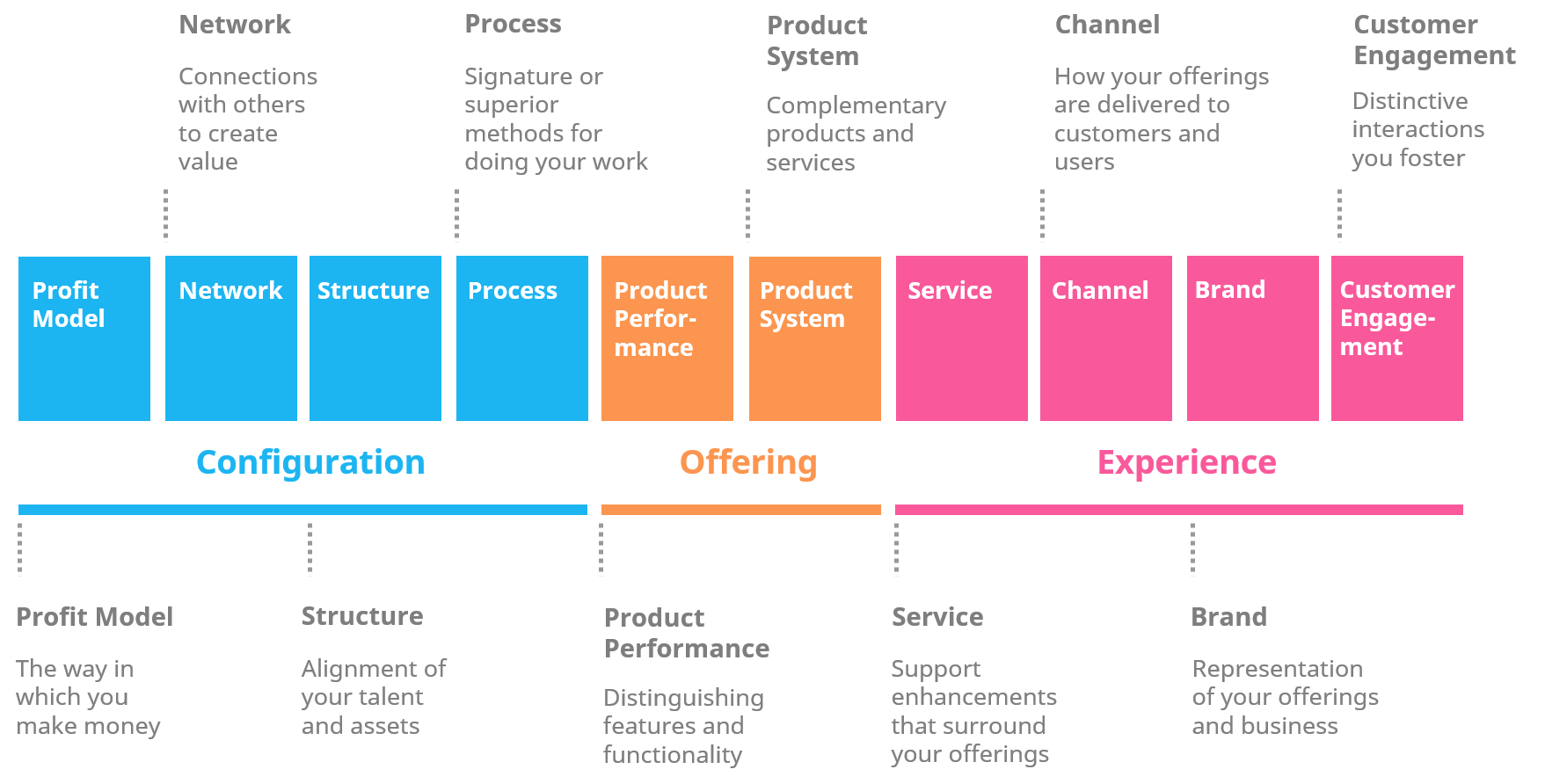
Conclusion
While creating a breakthrough innovation is quite simple on paper, it’s anything but in real life! Breakthrough innovation isn’t for the faint of heart.
To be clear, if you’re new to innovation, we don’t generally recommend you to just get to work on building the next big breakthrough innovation.
If your management or investors don’t fully understand how difficult breakthrough innovation is and how it is often likely to take quite some time before you see significant progress, the odds are your innovation projects won’t survive, even if you had what it takes to pull them off.
Thus, unless your back is against the wall, it might be better to start off with something a bit simpler where you can build your organization and your innovation program, rehearse your skills, refine the processes and prove that you’re able to get a positive return for their investments in innovation, then move on to pursuing the breakthroughs.
If you’re looking to understand the different kinds of innovation better, as well as plan your approach for using them, I’d recommend you to take a look at our guide on the topic.




